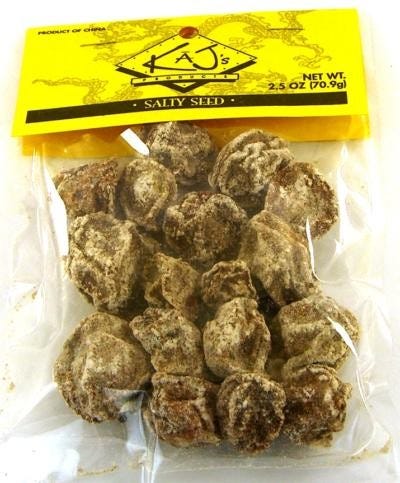A Biased View of I Luv Candi
A Biased View of I Luv Candi
Blog Article
The Basic Principles Of I Luv Candi
Table of ContentsThe 8-Second Trick For I Luv CandiI Luv Candi - The FactsWhat Does I Luv Candi Mean?Some Ideas on I Luv Candi You Should KnowThe 15-Second Trick For I Luv Candi
You can additionally approximate your very own profits by applying different assumptions with our economic strategy for a sweet shop. Typical monthly revenue: $2,000 This kind of candy shop is usually a little, family-run service, perhaps understood to citizens however not attracting huge numbers of tourists or passersby. The store may provide a choice of common sweets and a couple of homemade treats.
The shop doesn't usually carry uncommon or costly items, concentrating instead on affordable deals with in order to preserve normal sales. Presuming a typical spending of $5 per consumer and around 400 clients per month, the month-to-month income for this sweet-shop would be approximately. Ordinary regular monthly profits: $20,000 This sweet-shop gain from its calculated location in an active city area, bring in a multitude of customers looking for pleasant extravagances as they shop.

Along with its varied sweet selection, this shop may also market associated products like present baskets, candy arrangements, and uniqueness things, offering numerous income streams. The shop's place calls for a higher spending plan for rent and staffing yet results in greater sales volume. With an approximated average costs of $10 per customer and regarding 2,000 consumers each month, this store can generate.
The 6-Minute Rule for I Luv Candi
Located in a major city and visitor destination, it's a big facility, typically topped multiple floors and perhaps part of a nationwide or international chain. The store provides an enormous selection of sweets, consisting of exclusive and limited-edition items, and merchandise like top quality clothing and devices. It's not simply a shop; it's a location.
The functional prices for this type of store are considerable due to the area, size, personnel, and features used. Presuming an ordinary purchase of $20 per client and around 2,500 clients per month, this flagship shop could achieve.
Group Examples of Expenses Ordinary Regular Monthly Cost (Range in $) Tips to Lower Costs Rent and Utilities Shop lease, electrical power, water, gas $1,500 - $3,500 Consider a smaller sized place, negotiate rental fee, and utilize energy-efficient lighting and devices. Stock Candy, treats, packaging products $2,000 - $5,000 see this page Optimize supply administration to reduce waste and track preferred products to avoid overstocking.
All About I Luv Candi
Advertising and Advertising Printed materials, on-line ads, promotions $500 - $1,500 Emphasis on cost-effective digital advertising and marketing and use social networks systems free of cost promotion. Insurance coverage Organization liability insurance coverage $100 - $300 Search for affordable insurance policy prices and consider bundling policies. Devices and Upkeep Cash money registers, display racks, repair services $200 - $600 Buy previously owned devices when possible and perform normal upkeep to extend equipment lifespan.

This suggests that the sweet shop has actually reached a point where it covers all its fixed expenses and starts creating revenue, we call it the breakeven factor. Think about an example of a candy store where the monthly set expenses normally amount to roughly $10,000. A rough price quote for the breakeven factor of a candy store, would certainly after that be about (because it's the overall fixed cost to cover), or marketing in between with a cost variety of $2 to $3.33 per unit.
More About I Luv Candi
A large, well-located sweet shop would certainly have a greater breakeven factor than a small store that doesn't require much revenue to cover their expenses. Interested concerning the profitability of your candy shop?
An additional risk is competitors from other candy shops or larger sellers that might provide a bigger variety of products at reduced prices (https://is.gd/0nCNdx). Seasonal variations popular, like a drop in sales after vacations, can likewise impact earnings. Furthermore, changing consumer choices for much healthier snacks or dietary constraints can reduce the charm of standard sweets
Lastly, financial declines that reduce consumer costs can influence sweet-shop sales and success, making it crucial for sweet shops to manage their expenditures and adapt to changing market conditions to stay successful. These dangers are usually consisted of in the SWOT evaluation for a sweet-shop. Gross margins and internet margins are vital indications made use of to gauge the profitability of a candy shop organization.
Excitement About I Luv Candi
Basically, it's the revenue remaining after subtracting costs straight pertaining to the sweet stock, such as purchase prices from providers, manufacturing expenses (if the sweets are homemade), and personnel incomes for those associated with manufacturing or sales. https://www.kickstarter.com/profile/iluvcandiau/about. Web margin, on the other hand, elements in all the costs the candy shop sustains, including indirect costs like management costs, marketing, rental fee, and taxes
Candy shops usually have an average gross margin.For circumstances, if your sweet store makes $15,000 per month, your gross earnings would certainly be roughly 60% x $15,000 = $9,000. Think about a sweet shop that sold 1,000 candy bars, with each bar valued at $2, making the complete revenue $2,000.
Report this page